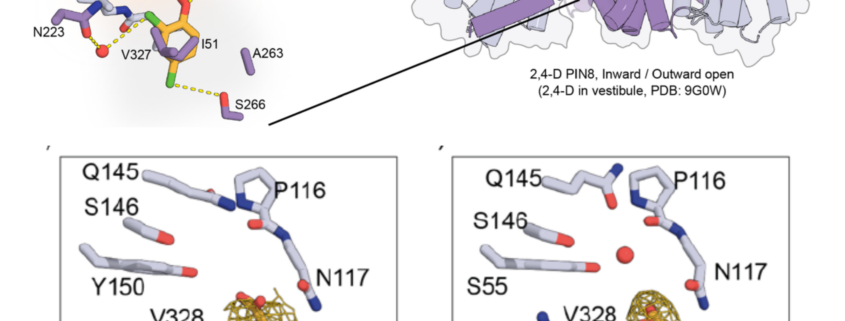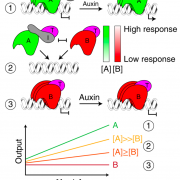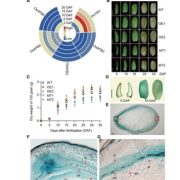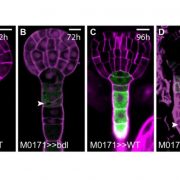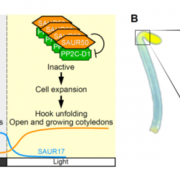PIN auxin transporters also transport auxin-like herbicides (and more?)
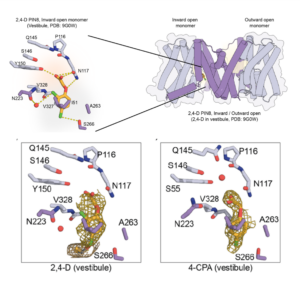 Auxin is an extremely important plant hormone that must be precisely controlled. Auxin-like herbicides have been developed that are often more stable than the natural auxins, thus their application can damage the plant. Here, Schulz, Ung et al. investigated how these auxin herbicides move in plant tissues. The authors investigated the interactions of the well-known PIN auxin transporters and various auxin herbicides, using several methods. Solid supported membrane (SSM) electrophysiology using liposomes as well as expression in oocytes allowed them to measure transport rate and binding affinities of the herbicides. They corroborated these results using cryo-EM, which allowed them to image direct interactions between the herbicides and the transporter proteins. They next generated a set of single residue variants and examined how these affected transport of the herbicides. Their results show that PIN proteins transport auxin herbicides in vivo and in vitro, shed light into the mechanisms of action of the PIN transporters, and open the door to the development of more-efficient herbicides and / or herbicide resistant plants. (Summary by Mary Williams @PlantTeaching) bioRxiv https://doi.org/10.1101/2024.08.29.610046. (Note that recently a human G-protein-coupled receptor was shown to have structural similarities to plant PIN transporters – maybe like auxin, PINs are everywhere 10.1038/s41586-024-08012-9).
Auxin is an extremely important plant hormone that must be precisely controlled. Auxin-like herbicides have been developed that are often more stable than the natural auxins, thus their application can damage the plant. Here, Schulz, Ung et al. investigated how these auxin herbicides move in plant tissues. The authors investigated the interactions of the well-known PIN auxin transporters and various auxin herbicides, using several methods. Solid supported membrane (SSM) electrophysiology using liposomes as well as expression in oocytes allowed them to measure transport rate and binding affinities of the herbicides. They corroborated these results using cryo-EM, which allowed them to image direct interactions between the herbicides and the transporter proteins. They next generated a set of single residue variants and examined how these affected transport of the herbicides. Their results show that PIN proteins transport auxin herbicides in vivo and in vitro, shed light into the mechanisms of action of the PIN transporters, and open the door to the development of more-efficient herbicides and / or herbicide resistant plants. (Summary by Mary Williams @PlantTeaching) bioRxiv https://doi.org/10.1101/2024.08.29.610046. (Note that recently a human G-protein-coupled receptor was shown to have structural similarities to plant PIN transporters – maybe like auxin, PINs are everywhere 10.1038/s41586-024-08012-9).


